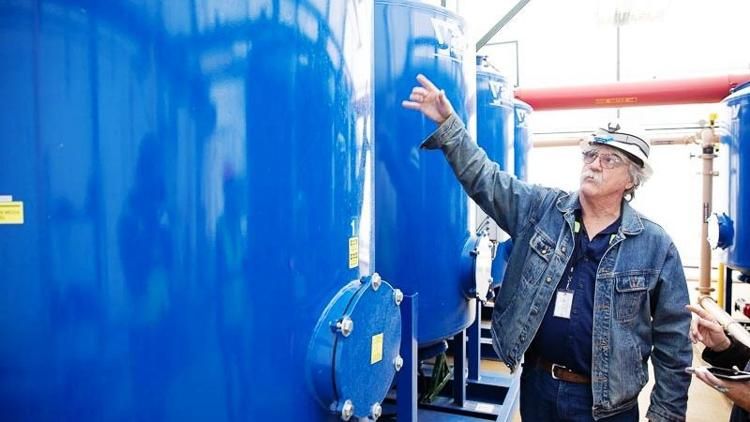Sanford Lab's wastewater treatment plant recognized
Published on by Water Network Research, Official research team of The Water Network in Case Studies
For the 11th consecutive year, the South Dakota Science & Technology Authority's Waste Water Treatment Plant has been recognized by the South Dakota Department of Environment and Natural Resources with the Operation and Maintenance Wastewater Treatment Award.
This award recognizes “outstanding operation of the wastewater system and environmental compliance with its state surface water discharge permit” during 2018.
 According to the WWTP team, however, the award just means they’ve been doing their job.
According to the WWTP team, however, the award just means they’ve been doing their job.
“This recognition means the operators are doing the right things and following procedures,” said Ken Noren, foreman of the WWTP. “We have a good team that works together and follows the rules. These people care about the facility, and that’s why we continue getting this award.”
Since 2008, the WWTP has treated billions of gallons of water. More than half of that water is pumped from underground while the rest is added from the Grizzly Gulch tailings.
Once treated, the water is released into Gold Run Creek, which joins Whitewood Creek within a few hundred yards of the discharge pipe. Sanford Lab regularly monitors the health of the creeks, counting fish and macro invertebrate populations, and tests for contaminants.
"Wastewater treatment is vitally important to our quality of life because it removes harmful pollutants that can spread disease and provides safe water for use by all those downstream," said DENR Secretary Steve Pirner. "The winners of DENR's Surface Water Discharge Permit Awards are to be thanked because they collect, treat and maintain their wastewater treatment systems at the highest levels."
The Operation and Maintenance Wastewater Treatment Award commends the WWTP for its compliance with state environmental requirements, the quality of the treated and discharged wastewater, monitoring reports, state inspections and proper operation and maintenance of the wastewater treatment facility.
The WWTP team’s goals, however, stretch beyond dedication to day-to-day efficiency. The team consistently evaluates and modifies their processes in an effort to make the facility as effective and sustainable as possible.
One way they have accomplished this is by modifying the Yardney multi-media filters that pull suspended impurities (such as iron and debris) from the water.
In this first step of filtration, the water runs through four layers starting at the top with anthracite coal, fine garnet, coarse garnet and, finally, clean gravel. As it filters through to the bottom, more and more impurities are removed.
“We’ve found different ways to clean and modify these filters so we can pull more dirt and material out of the water,” said Noren. “This impacts the rest of the process. The cleaner the water is before it goes to the bacteria to have ammonia removed, the less bacteria you need to maintain.”
The team has also significantly reduced the chemicals used to further purify the water. After initial filtration, the water is mixed with a coagulant that neutralizes the charge of the iron particles and a flocculant, or clarifying agent, that causes the iron to form into clumps that settle to the bottom of the tank.
Originally, the process required 300 gallons of each chemical every two weeks. Now, they achieve the same filtration standard using only 200 gallons of coagulant every year and a 100 milliliter bottle of flocculant every year and a half.
Media
Taxonomy
- Waste Water Treatments